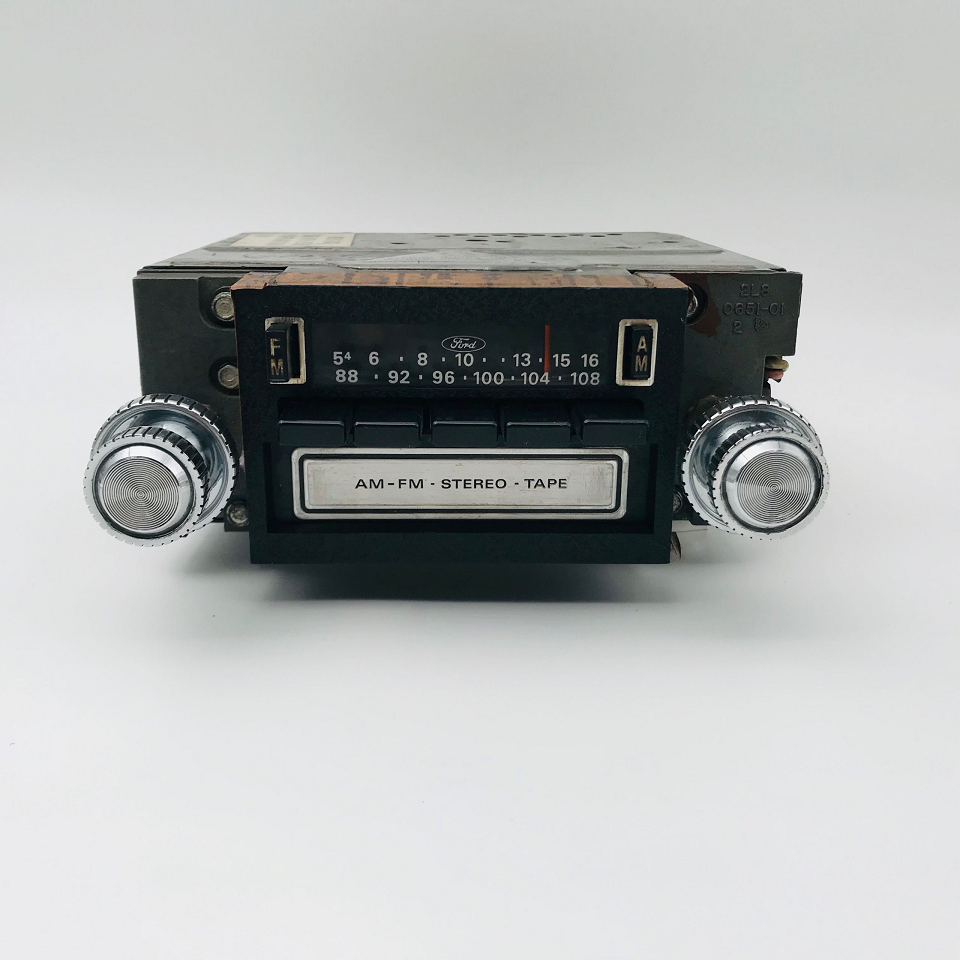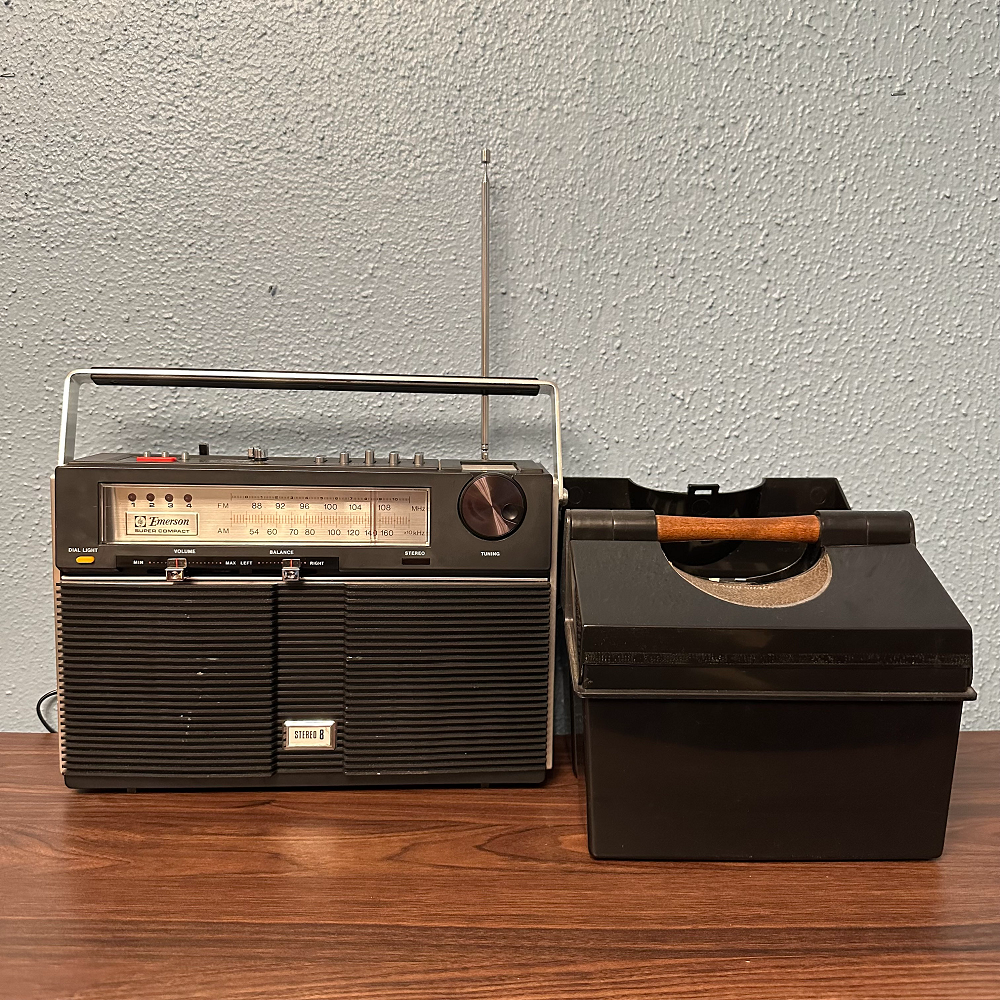Introduction to 8-Track Radios
8-track radios hold a unique place in the history of consumer electronics. These devices became popular in the mid-1960s and dominated the market until the early 1980s. Today, 8-track radios evoke a strong sense of nostalgia. They remind us of a time when listening to music was a tactile experience. The sound of tapes clicking into place, the clunky buttons, and the analog dials are unforgettable. This article delves into the fascinating history, technology, and lasting legacy of 8-track radios.

Historical Context
The Rise of 8-Track Technology
8-track technology originated from Bill Lear, the founder of Lear Jet Corporation. He patented it in 1964 after making several improvements to the existing 4-track system. His aim was to create a more user-friendly music format for cars. The 8-track cartridge was more durable and convenient compared to vinyl records. The format quickly caught on, particularly in the automotive industry. Major car manufacturers like Ford began offering 8-track players as optional equipment. This move revolutionized how people listened to music while driving.
Cultural Impact in the 1960s and 1970s
The cultural impact of 8-track radios was immense. They became a symbol of modernity and convenience. People could now enjoy their favorite music while driving, which was a significant lifestyle change. The portability and ease of use made 8-tracks popular among the younger generation. Many music labels embraced the format, releasing albums in 8-track format. This led to a boom in 8-track radio sales. The decade saw significant technological advancements, but 8-tracks stood out for making music more accessible on the go.
Competition and Decline
Despite their popularity, 8-track radios faced stiff competition. The cassette tape format started gaining traction in the early 1970s. Cassette tapes were smaller, easier to store, and offered better sound quality. By the late 1970s, the cassette format had overshadowed the 8-track. The advent of the compact disc (CD) in the early 1980s further accelerated the decline of 8-tracks. Despite this, 8-track radios left an indelible mark on music consumption.
Technological Aspects of 8-Track Radios
How 8-Track Tapes Work
8-track tapes use a continuous loop of magnetic tape divided into eight channels, or tracks. Each track contains two stereo channels (left and right), allowing for four stereo programs. The tape passes over a pressure pad that ensures it maintains contact with the playback heads. An internal mechanism changes the track by moving the playback head vertically. This track-changing mechanism was innovative but prone to issues. Nevertheless, it was this feature that set 8-track tapes apart from other formats.
Components of 8-Track Radios
An 8-track radio consists of several key components. First, there’s the tape head, responsible for reading the magnetic tape. The pinch roller moves the tape across the head. The cartridge houses the tape and aligns it properly with the tape head. The playback mechanism is motor-driven and includes gears and belts to move the tape. Lastly, the amplifier enhances the audio signal before it reaches the speakers. These components work in unison to provide a seamless listening experience. However, the complexity of the system often led to mechanical failures.
Sound Quality and Limitations
Sound quality was a mixed bag for 8-track radios. They offered better audio quality than AM/FM radios of the time. However, they couldn’t match the fidelity of vinyl records or later formats like the CD. The continuous loop mechanism led to wear and tear, degrading sound quality over time. Tape hiss was another issue, as magnetic tapes are prone to background noise. Despite these limitations, 8-tracks were revolutionary for their time. They provided a convenient and portable way to listen to music, compensating for their technical shortcomings.
Collecting and Restoring 8-Track Radios
The Appeal of Collecting
8-track radios have become collector’s items. They offer a tangible connection to a bygone era. For many, collecting 8-track radios is about nostalgia. The physicality of the tapes, the sound, and even the imperfections have a sentimental value. Collectors love finding rare tapes and vintage players. The hunt is part of the thrill. Sites like eBay and thrift stores are treasure troves for enthusiasts. The community around 8-track collecting is tight-knit, sharing tips and finds.
Restoration Techniques
Restoring an 8-track radio can be rewarding but challenging. Start by cleaning the tape heads and pinch roller. Use isopropyl alcohol and a Q-tip for this. Next, inspect the belts and gears in the playback mechanism. These often wear out and need replacement. You can find replacement parts online or from specialized stores. The tape itself might need splicing if it has broken. Use adhesive tape designed for magnetic tapes. Ensure the internal pressure pads are in good shape. These are crucial for maintaining tape-to-head contact.
Maintenance Tips
Regular maintenance keeps your 8-track player in good condition. Clean the tape head and pinch roller after every few hours of use. Avoid storing tapes in hot or humid environments. These conditions can degrade the magnetic tape. Periodically check the belts and gears for wear and tear. Replace them as needed. Keep the cartridges dust-free by storing them in cases. Regular use can actually be beneficial. It keeps the mechanical parts in good working order.
The Legacy of 8-Track Radios
Influence on Modern Music Formats
8-track radios laid the groundwork for future music formats. Their emphasis on portability influenced the development of cassette tapes and portable CD players. The concept of in-car entertainment systems began with 8-tracks. Today’s digital music formats owe a lot to this early innovation. Despite their decline, the 8-track’s contribution to the evolution of music consumption is undeniable. They made it possible to take your music wherever you went, a concept that persists today.
Nostalgia in Modern Culture
The nostalgia surrounding 8-track radios is strong. They appear in movies, TV shows, and even music videos. They symbolize a simpler time. The tactile experience of handling tapes contrasts sharply with today’s digital world. For many, 8-tracks represent the golden age of music. The imperfections, from tape hiss to mechanical glitches, add to their charm. They remind us that music is not just about sound. It’s also about the experience of how it’s delivered.
Collecting as a Hobby
Collecting 8-tracks has evolved into a popular hobby. It attracts not just older generations but younger enthusiasts intrigued by analog technology. Online forums and social media groups dedicated to 8-tracks have sprung up. They share restoration tips, rare finds, and nostalgic memories. This community keeps the legacy of 8-tracks alive. It’s a niche interest, but one filled with passion and dedication. Collecting and restoring 8-tracks offers a rewarding way to connect with music history.
Comparing 8-Track Radios to Modern Devices
Portability and Convenience
Modern devices have far surpassed 8-track radios in terms of portability and convenience. Today, smartphones can store thousands of songs. Streaming services offer virtually unlimited access to music. Despite this, 8-track radios have a charm that modern devices lack. They offer a tactile, hands-on experience. This makes them unique in a world dominated by digital technology. The process of inserting a tape and adjusting the dials adds an element of ritual to music listening.
Sound Quality
Sound quality has significantly improved with modern technology. High-definition audio, noise-canceling headphones, and digital sound enhancements offer a superior listening experience. Streaming services provide high-fidelity audio at our fingertips. However, the analog sound of an 8-track has its own appeal. The slight tape hiss and the mechanical clicks add character. They provide a vintage listening experience that digital formats can’t replicate. Both formats have their strengths, depending on what you’re looking for.
User Experience
The user experience differs dramatically between 8-track radios and modern devices. Modern music players offer easy navigation, playlists, and on-demand access to millions of songs. Voice commands and touchscreens simplify user interaction. 8-track radios, on the other hand, require a more hands-on approach. You need to physically insert the tape and manually select tracks. This adds a layer of engagement. The simplicity of the 8-track can be refreshing. It’s a break from the complexities of modern devices.
The Future of 8-Track Radios
Revival and Retro Boom
There’s a growing interest in retro technology. Vinyl records made a comeback, and 8-tracks are experiencing similar interest. New generations are discovering the appeal of analog formats. This revival has spurred the production of new 8-track cartridges. Some artists release limited-edition albums in 8-track format. This trend adds to the collectible value. The retro boom is breathing new life into 8-track radios. They are no longer mere relics; they are part of a living, evolving culture.
Innovations and Custom Projects
Some enthusiasts are innovating with 8-track technology. Custom projects include hybrid players that merge old and new technologies. Bluetooth-enabled 8-track players are emerging. These allow for streaming while retaining the classic look and feel. Such innovations make 8-tracks more accessible to modern users. They blend the nostalgia of analog with the convenience of digital. These custom projects are pushing the boundaries of what’s possible with vintage tech.
Community and Cultural Impact
The community surrounding 8-track radios is vibrant. Enthusiasts share a passion for this vintage format. They celebrate its quirks and imperfections. This community plays a crucial role in keeping the 8-track legacy alive. Online forums, social media groups, and local meet-ups foster a sense of belonging. They also serve as valuable resources for tips and advice. The cultural impact of 8-tracks extends beyond their heyday. They continue to influence how we think about and interact with music.
Conclusion
8-track radios hold a special place in the world of music. They revolutionized how we listened to music, particularly on the go. Their technological innovations laid the groundwork for future formats. Despite their decline, they left an indelible mark on music history. Collectors and enthusiasts keep their legacy alive, celebrating the charm and nostalgia they evoke. The rise of modern digital formats has not diminished their cultural significance.
Restoring and maintaining 8-track radios offer a rewarding hobby. It provides a hands-on way to connect with music history. The growing interest in retro technology hints at a bright future for 8-tracks. Whether you’re a collector, a restorer, or just curious, 8-track radios offer a fascinating journey into the past. They remind us that sometimes, less is more. The tactile, engaging experience of an 8-track can enrich our modern, digital lives. Through their quirks and imperfections, they teach us to appreciate the evolution of music technology. So, dust off that old player, pop in a tape, and rediscover the joy of 8-track radios.


